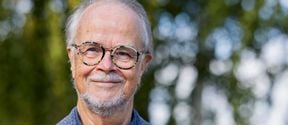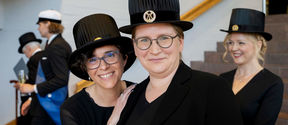Safety at sea is the sum total of many factors
The aim of safety management is to prevent ship accidents, the consequences of which can be serious. For this, information about the safety performance is needed. This is hard to define, however.
’Safety at sea is a manifold concept that is not entirely understood. The level of safety cannot be directly measured, either’, points out MSc (Tech.) Maria Hänninen.
In her dissertation, Hänninen investigated the mutual dependencies of maritime safety variables and their modelling with Bayesian networks.
The dissertation approaches the safety issue from several viewpoints. Among the targets of examination are the reasons for accidents, ships' safety inspections and safety management systems.
’The results of this work support the idea that safety performance cannot be determined through single factors. A much better idea can be obtained by examining larger entities and the patterns of variables related to safety’, Hänninen says.
The dissertation highlights the fact that the variables related to safety and the patterns between them are not necessarily obvious. For example, a good IT- and reporting system increases the probability that the level of the safety management of the ship is high.
The level of knowledge should be improved.
The traditional way to study the safety of maritime traffic and to try to model it is by concentrating on accidents and their causes. According to the dissertation, modelling of these kinds of causal dependencies is questionable due to the scarcity of usable material.
In addition to ships involved in accidents, Hänninen, in her dissertation, also examines the traffic of other vessels. Her approach is in line with the newest research directions, which focus on examining ordinary activities and why things run smoothly.
According to the dissertation, Port State Control inspections could have potential to act as good data sources for safety management. These are inspections in which the condition of vessels under a foreign flag is inspected in accordance with the legislation and regulations.
Hänninen sees the need to study whether Port State Inspections could be improved in such a way that they would produce information about safety differences, more detailed than those currently, between different vessels. Presently, only a little usable information is accumulated with the inspections.
Tool for safety work
Hänninen modelled patterns of safety variables with the help of Bayesian networks based on probability calculations. Similar modelling hasn't been carried out before.
Based on the dissertation, Bayesian networks are suitable for modelling the complex concept of maritime safety, which is not entirely understood – a concept where all the factors cannot be directly observed or information about them cannot be directly obtained.
According to Hänninen, the Bayesian network produces a graphical presentation of the problem, helping to understand the concept presented and thus making it easier to apply the method to safety management in practice.
The difficulty lies in that the evaluation of the probability of the safety factors used in the Bayesian network is laborious and requires expertise. But once the data has been collected, updating of it is easy.
Maria Hänninen, MSc (Tech.) will publicly defend her dissertation on 6 March 2015 at 12 noon at the Department of Applied Mechanics of the Aalto University School of Engineering. The topic of her dissertation is ‘Bayesian network modeling of potential patterns in maritime safety performance’.Venue: Maritime Centre Vellamo, Ilmari Auditorium, Tornatorintie 99, Kotka
- Published:
- Updated:
Read more news

Join us for the first Aalto Open Science Award Ceremony
All Aaltonians are welcome – no registration required!
Donor story - Yrjö Sotamaa: ‘Supporting the university is about building our own future’
Professor Emeritus is still an active design influencer both at home and internationally. He is now also a monthly donor to School of Arts, Design and Architecture.
Doctoral education pilot arouses wide interest among applicants and corporate partners
The doctoral education pilot has got off to a fast start.